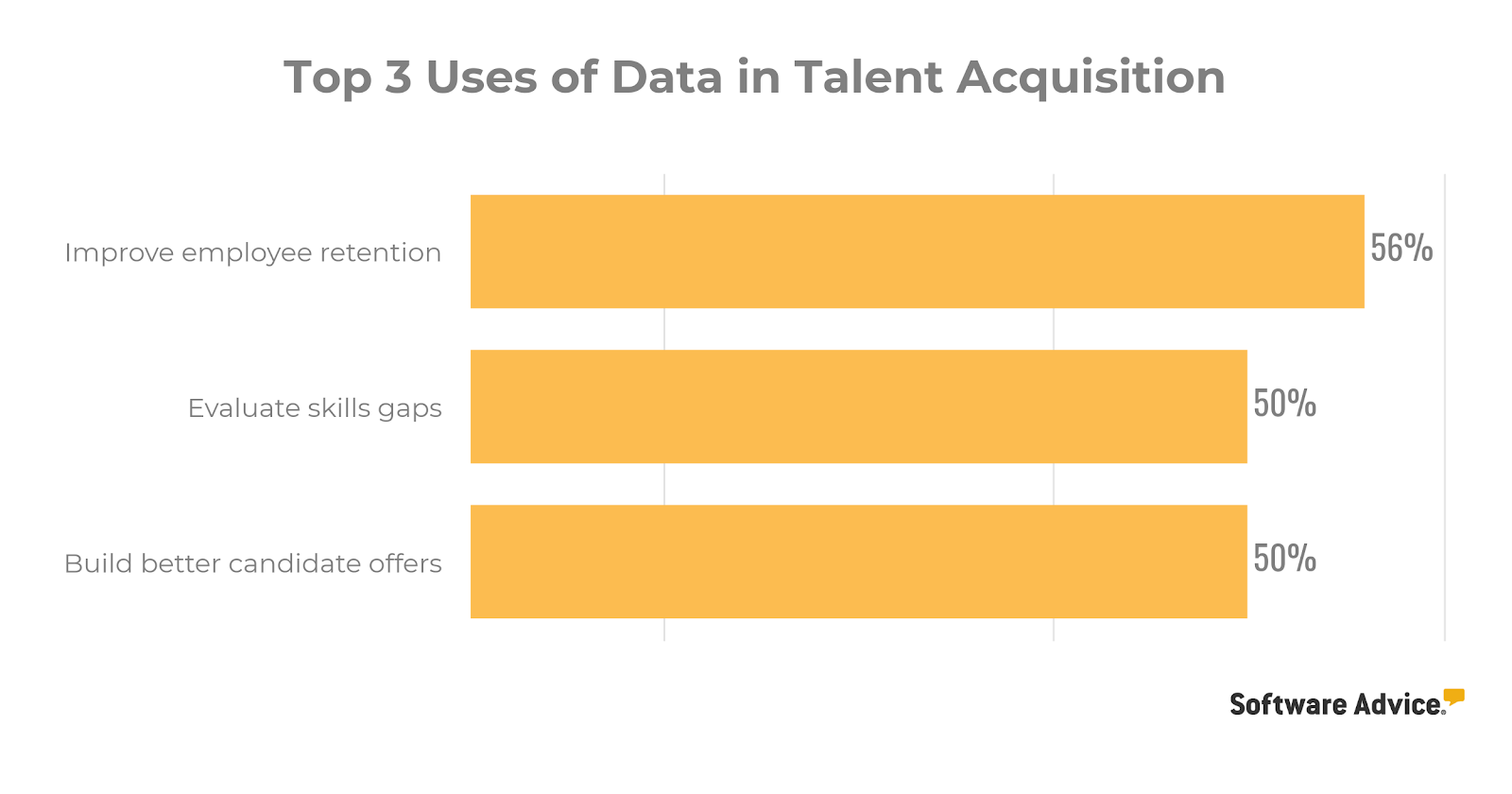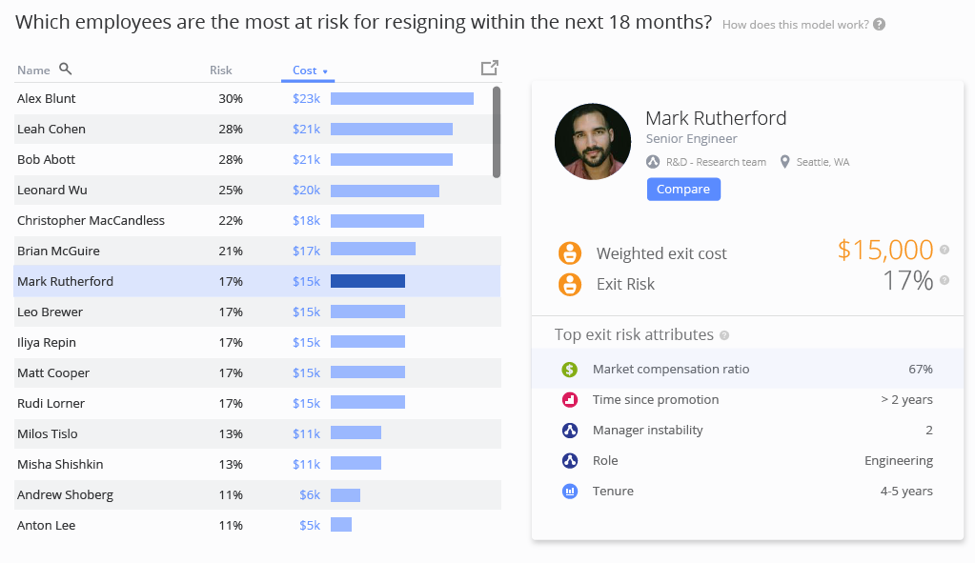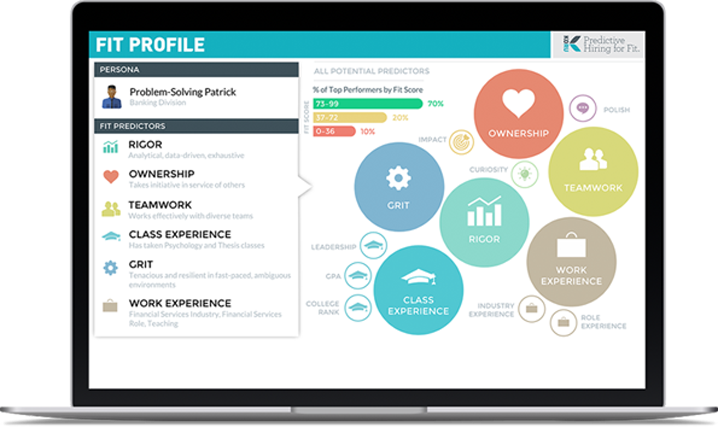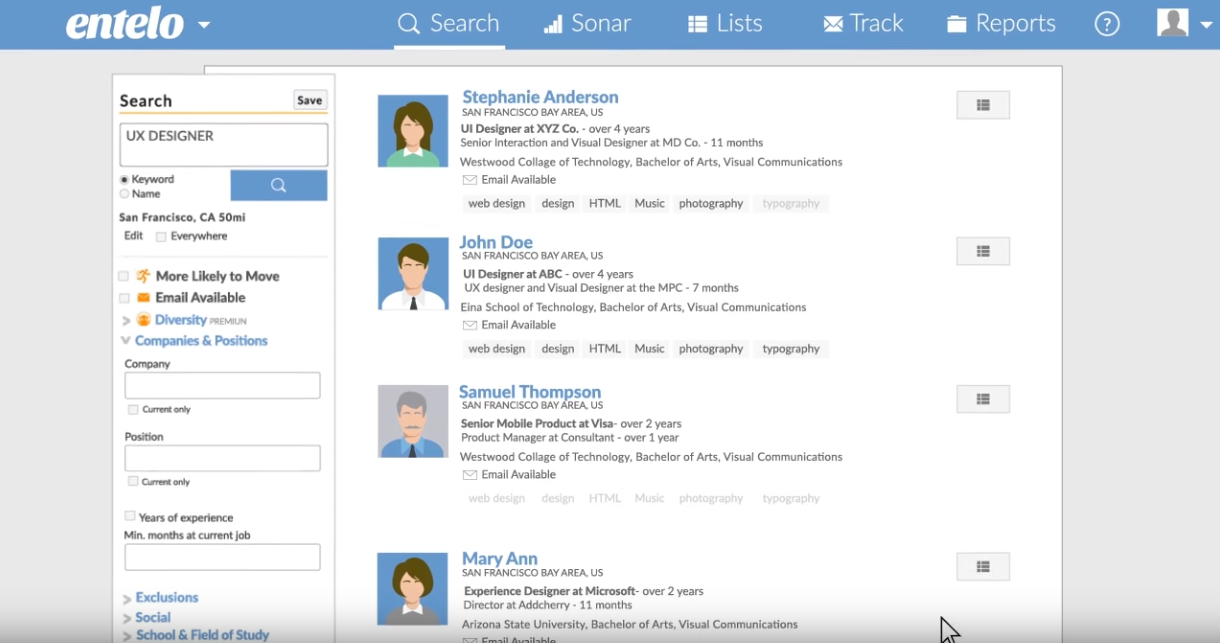How Recruiters Can Use Predictive Analytics To Improve Hiring
Attracting and retaining talent is difficult enough, but during a skilled labor shortage, it’s even tougher. Without analyzing data, predicting employee tenure and candidate compatibility becomes little more than a guessing game.
Recruiters and hiring managers have reams of workforce data at their fingertips, yet Gartner reports that only 21% of HR leaders believe that their organizations are harnessing talent data effectively to make better business decisions.
Predictive analytics in recruitment can provide insight into the effectiveness of your recruitment and hiring efforts. In order to hire intelligently, managers must understand how data can help them make future hiring predictions, and therefore more accurate business decisions.
What is predictive analytics in recruitment?
Predictive analytics in recruitment is the use and analysis of historical data to make future predictions, intended to inform future recruiting strategies, hiring decisions, and workforce planning.
By identifying historical patterns in data, predictive analytics can provide recruiting and HR managers with insights on likely future occurrences. Though it’s no crystal ball, predictive analytics allow decision-makers to pinpoint trends with a significant degree of certainty, assisting them in optimizing their actions for better results.
Why predictive analytics is important in hiring: The ability to make quicker and more precise predictions—and therefore, decisions—is important during a skilled labor shortage. As we’ve reported before, the best candidates only stay on the job market for 10 days before getting snapped up, and people are job-hopping more than ever before.
Predictive analytics can help recruiting and hiring professionals:
Identify strong hires for open positions
Make quicker and better offers to candidates
Provide a better candidate experience
Uses of predictive analytics in recruitment and hiring
Between their tech stack of applicant tracking systems (ATS), HR platforms, performance management solutions, and more, recruiters are collecting hoards of people data almost every day. Though they’re aware of the magnitude of data they have access to and are using it to support current business decisions, many don’t know how to use it to make future predictions.

Improving employee retention, evaluating skills gaps, and building better candidate offers are currently the top uses of data in talent acquisition (Source)
In fact, Gartner reports that teams using talent analytics are struggling to use them to inform business outcomes, focusing instead on “capturing metrics from HR systems, preparing reports, and using basic descriptive statistics to identify trends and spot current talent problems and opportunities” (full content available to clients).
Let’s take a look at some of the ways that predictive analytics can be used in hiring and recruitment.
Use case #1: Predict and prevent employee turnover
Employee turnover can cost businesses around 150% of an employee’s annual salary due to the time and money spent hiring a replacement. Research also shows that 75% of the causes of turnover are preventable.

Visier’s predictive analytics feature evaluates which employees are most “at risk” of leaving based on an analysis of employee attributes (Source)
Using predictive analytics, organizations can predict which employees are at most risk of resigning or retiring, including the financial impact that these will have. By detailing the workforce factors and variables that might cause each potential resignation, predictive analytics can also facilitate targeted retention and/or hiring plans.
Use case #2: Predictive hiring
Hiring is another area where the industry can benefit from analyzing data to help assess candidates. Using people data from existing employees, predictive algorithms aim to narrow down candidates before they even make it to the recruiter or hiring manager, and recommend only the best-fit candidates.

Koru’s “Impact Skills” provides users with a candidate fit score to help them identify the best hiring choices (Source)
It’s still common for recruiters and hiring managers to rely on resume screening and interviews to narrow down a candidate list and make hiring decisions. Predictive hiring learns from existing employee data to predict a candidate’s potential fit and job success.
There are various predictive hiring technologies on the market, but predictive hiring models generally use performance, attrition, and employee engagement data to shortlist the best candidates.
Use case #3: Talent sourcing
Talent acquisition costs have soared over the past few years, meaning that making sure you’re hiring the right employees is a more important task than ever.
More importantly, amidst a talent shortage and an increasingly competitive hiring environment, organizations need to rely on more agile methods of talent acquisition if they’re to capture the best candidates.
Predictive analytics tools can aid talent acquisition processes by filling talent pipelines with candidates that are likely to switch jobs in the near future. For example, HR platform Entelo uses its own algorithm called “More Likely to Move” to identify candidates who have a 30% likelihood of switching jobs in the next 90 days.

Entelo__‘s “More Likely to Move” algorithm identifies passive candidates (Source)
Using predictive variables, the tool analyzes candidate data from their social media profiles, their company health information, and stock fluctuations to predict which people might be prime passive candidates. It also looks at other signals such as tenure, company turnover rates, and other company news. This helps hiring professionals seek out candidates, but also helps them augment their recruitment strategy to suit this type of candidate.
Predictive analytics in recruitment: In data we trust?
While predictive analytics can help recruiters put only the best candidates in front of hiring managers, organizations need to first evaluate predictive analytics tools against their own unique business needs. As with any tool, predictive analytics can only deliver a solution if you know what the problem is first.
Data alone has limited impact. Any data that predictive analytics returns is useless without a human to make final decisions on hiring. However, predictive analytics can save recruiters and hiring managers time and money by narrowing candidate shortlists down, freeing up time for HR teams to focus on other activities.
For more information about recruiting and hiring technology, call our expert recruiting software advisors on (844) 675-2849. During a free 15-minute phone consultation, they’ll be able to give you a full assessment and product recommendations for your unique business needs.
Note: The applications selected in this article are examples to show a feature in context and are not intended as endorsements or recommendations. They have been obtained from sources believed to be reliable at the time of publication.